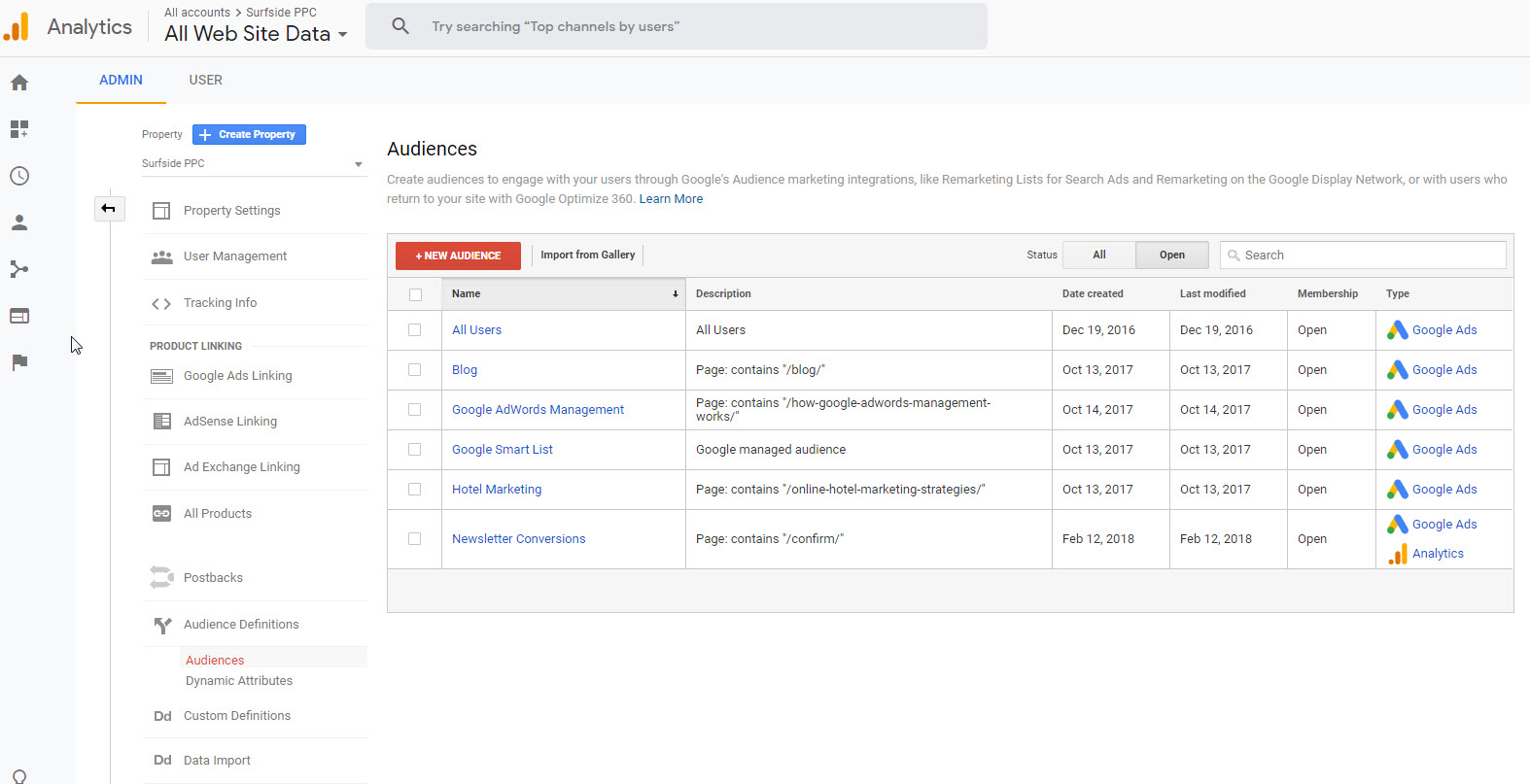Utilizing Remarketing in Google Analytics: A Comprehensive Overview
Harnessing remarketing in Google Analytics provides companies a tactical side in reaching out to prospective customers. This overview will lose light on the necessary steps involved in using the complete capacity of remarketing in Google Analytics, leading to improved advertising outcomes.
Understanding Remarketing in Google Analytics
Remarketing in Google Analytics allows services to tactically target customers who have formerly engaged with their internet site or mobile app. By leveraging data from Google Analytics, companies can develop tailored remarketing checklists based upon customer habits, such as web pages checked out, actions taken, or certain goals attained. This effective tool makes it possible for organizations to re-engage with customers who have actually shown passion in their services or products, eventually raising the chance of conversion.
Comprehending the various sorts of remarketing methods is important for a successful project - What Is “Remarketing” In Google Analytics?. Google Analytics uses various choices, including conventional remarketing, vibrant remarketing, and remarketing lists for search ads (RLSA) Each kind offers a distinct objective and can be tailored to satisfy particular marketing purposes
In addition, evaluating the efficiency of remarketing projects is vital for enhancing results. Google Analytics offers important understandings right into the performance of various remarketing techniques, allowing businesses to make data-driven decisions and refine their targeting strategy. By constantly changing and keeping an eye on remarketing efforts based on analytics data, businesses can make best use of ROI and drive success in their advertising initiatives.
Establishing Remarketing Campaigns

After establishing target market listings, the next step is to link Google Analytics with Google Advertisements. By connecting these 2 platforms, businesses can effortlessly transfer target market lists from Google Analytics to Google Advertisements for remarketing objectives. This integration permits for more precise targeting and better campaign performance.
As soon as the accounts are linked, businesses can create remarketing projects in Google Advertisements using the target market provides previously defined in Google Analytics. These campaigns can be tailored with certain ad creatives, messaging, and bidding process strategies to efficiently re-engage with past site visitors and drive conversions. By adhering to these actions, organizations can leverage the power of remarketing to enhance their marketing initiatives and enhance ROI.
Utilizing Target Market Segmentation Methods

Predefined sectors in Google Analytics allow you to rapidly analyze usual target market categories fresh individuals, returning individuals, or customers that completed a details goal on your website. Personalized segments, on the other hand, enable you to produce special sectors based upon details requirements that are vital to your business objectives. Dynamic remarketing listings immediately change based on individual habits, revealing personalized ads to customers that why not find out more have actually connected with your website particularly methods.
Studying Remarketing Efficiency Metrics
Upon reviewing the efficiency of remarketing projects in Google Analytics, the analysis of key efficiency metrics provides beneficial insights right into audience involvement and conversion prices. By diving into metrics such as click-through prices (CTR), conversion rates, cost per purchase (CERTIFIED PUBLIC ACCOUNTANT), and return on ad invest (ROAS), marketers can assess the success of their remarketing initiatives. Evaluating these metrics allows marketers to enhance projects, refine audience targeting, and designate budgets successfully to boost overall remarketing performance.
Maximizing Remarketing Strategies
When refining remarketing approaches in Google Analytics, focusing on audience division is extremely important for achieving campaign success. By splitting your target market into particular sectors based on their habits, demographics, or passions, you can customize your advertisements better to every group. This targeted method boosts the chance of involving customers who have already revealed passion in your product and services, bring about higher conversion rates.
Another vital facet of maximizing remarketing approaches is constantly testing and refining your campaigns (What Is “Remarketing” In Google Analytics?). A/B screening different ad creatives, messaging, or offers can help you determine what resonates finest with your audience and drives the most conversions. By assessing the performance of these tests in Google Analytics, you can make data-driven decisions to maximize your remarketing efforts additionally
Furthermore, leveraging dynamic remarketing can significantly improve your campaign results. This attribute enables you to show tailored ads to individuals based upon their past interactions with your web site, their explanation showcasing solutions or products they have actually formerly seen. By providing customized web content to customers based upon their habits and passions, dynamic remarketing can aid raise engagement and drive conversions.
Final Thought
In final thought, harnessing remarketing in Google Analytics is a critical strategy to target users who have actually previously involved with a web site. By developing customized audience lists and making use of audience division approaches, businesses can optimize her latest blog remarketing advocate boosted conversion rates. Examining performance metrics and continually enhancing strategies are crucial for taking full advantage of the effectiveness of remarketing efforts.
Google Analytics uses various alternatives, consisting of conventional remarketing, dynamic remarketing, and remarketing listings for search ads (RLSA)After setting up target market lists, the following step is to connect Google Analytics with Google Ads. By linking these 2 systems, services can flawlessly transfer target market lists from Google Analytics to Google Advertisements for remarketing functions.When the accounts are connected, organizations can develop remarketing campaigns in Google Ads using the target market details formerly defined in Google Analytics.When refining remarketing approaches in Google Analytics, focusing on target market segmentation is paramount for accomplishing project success.